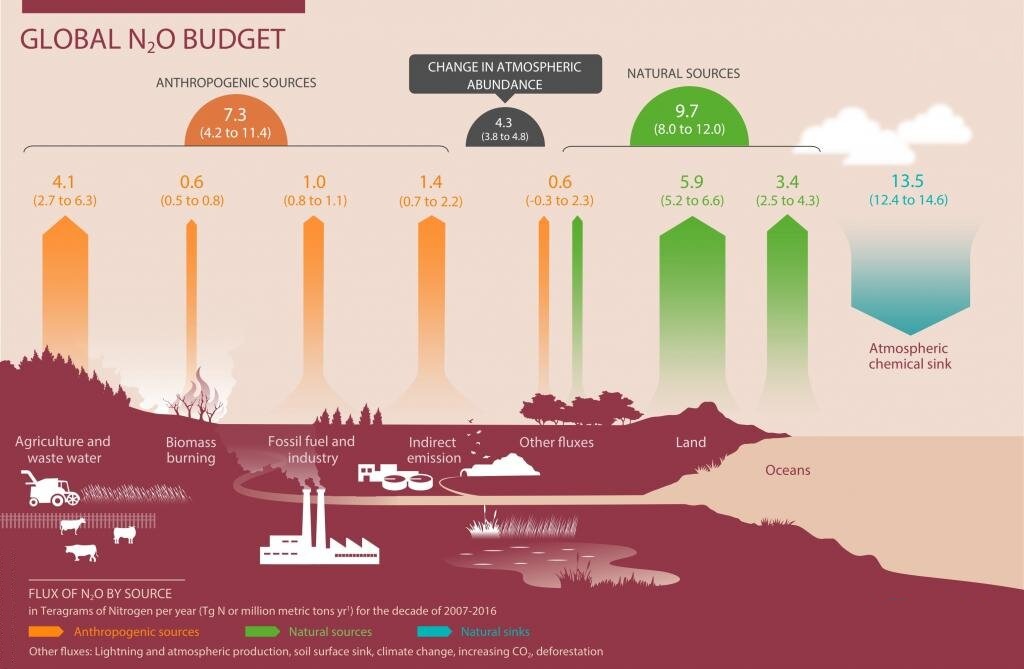Biodiversity & Environment
Increased Emissions of N2O
- 17 Oct 2020
- 4 min read
Why in News
According to a recent research paper, human emissions of nitrous oxide (N2O) have increased by 30% between 1980 and 2016.
- The research was conducted through an international collaboration between the International Nitrogen Initiative (INI) and the Global Carbon Project of Future Earth, a partner of the World Climate Research Programme.
Key Points
- Nitrous Oxide (N2O):
- It is a greenhouse gas (GHG) 300 times more potent than carbon dioxide (CO2).
- It has the third-highest concentration, after CO2 and methane (CH4), in Earth’s atmosphere among GHGs responsible for global warming.
- N2O is also the only remaining threat to the ozone (O3) layer, for it accumulates in the atmosphere over a long period of time, just like CO2.
- It can live in the atmosphere for up to 125 years.
- Its global concentration levels have increased from 270 parts per billion (ppb) in 1750 to 331 ppb in 2018, a jump of 20%.
- The growth has been the quickest in the past five decades because of human emissions.
- Research and the Study:
- This is the most comprehensive study of global N2O emissions ever published, as it combines both natural and anthropogenic (man-made) sources.
- The study found that 43% of the total emissions came from human sources and most N2O emissions came from emerging countries like India, China and Brazil.
- Increase in its emissions means that the climatic burden on the atmosphere is increasing from non-carbon sources as well, while the major focus of global climate change negotiations is currently centred on carbon, its emissions and mitigation.
- It also highlighted the dichotomy of the climate crisis and global food security.
- A major proportion of the N2O emissions in the last four decades came from the agricultural sector, mainly because of the use of nitrogen-based fertilisers.
- The growing demand for food and feed for animals will further increase its global emissions, leading to a direct conflict between the way countries are feeding people and stabilising the climate.
- Suggestions:
- There are well-established practices and technologies like crop and manure management, the use of bio-fertilisers, to mitigate N2O emissions which need to be utilised to their full extent.
- Revised industrial and agricultural policies at the global level will reduce such emissions considerably.
- Reducing GHGs emissions will also have the co-benefits of reduced air and water pollution.
- There is a need to bring the non-carbon sources under the major global climate change negotiations.
- It is possible to slow down N2O emissions if countries implement the United Nations Global Campaign on Sustainable Nitrogen Management, 2019 held in Colombo, Sri Lanka.
- The focus of the event was to finalise the Colombo Declaration, a follow up on the UNEA 4 Resolution on Sustainable Nitrogen Management which aims to further the dialogue on Nitrogen management.







